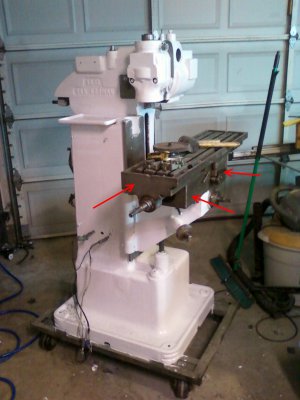- Joined
- Sep 3, 2012
- Messages
- 51
Hello All,
There are surfaces on the machine that were not painted when I purchased the machine. The surfaces were machined as part of the manufacturing process. For example the front of the knee where the Y drive handle is located. There is a large area of bare metal that I'm wondering if I could/should paint.
I can think of three reasons not to paint an area. First, if the surface needs to be used as a reference. You couldn't count on the paint be a uniform thickness. Second, if the area was used to hold or clamp something, the paint would be crushed by the clamping pressure and would chip off. Finally, the coolants/oils will lift the paint from the surface.
I am not concerned about the look or cosmetic aspects, I just want to prevent corrosion.
Evan R.
There are surfaces on the machine that were not painted when I purchased the machine. The surfaces were machined as part of the manufacturing process. For example the front of the knee where the Y drive handle is located. There is a large area of bare metal that I'm wondering if I could/should paint.
I can think of three reasons not to paint an area. First, if the surface needs to be used as a reference. You couldn't count on the paint be a uniform thickness. Second, if the area was used to hold or clamp something, the paint would be crushed by the clamping pressure and would chip off. Finally, the coolants/oils will lift the paint from the surface.
I am not concerned about the look or cosmetic aspects, I just want to prevent corrosion.
Evan R.


